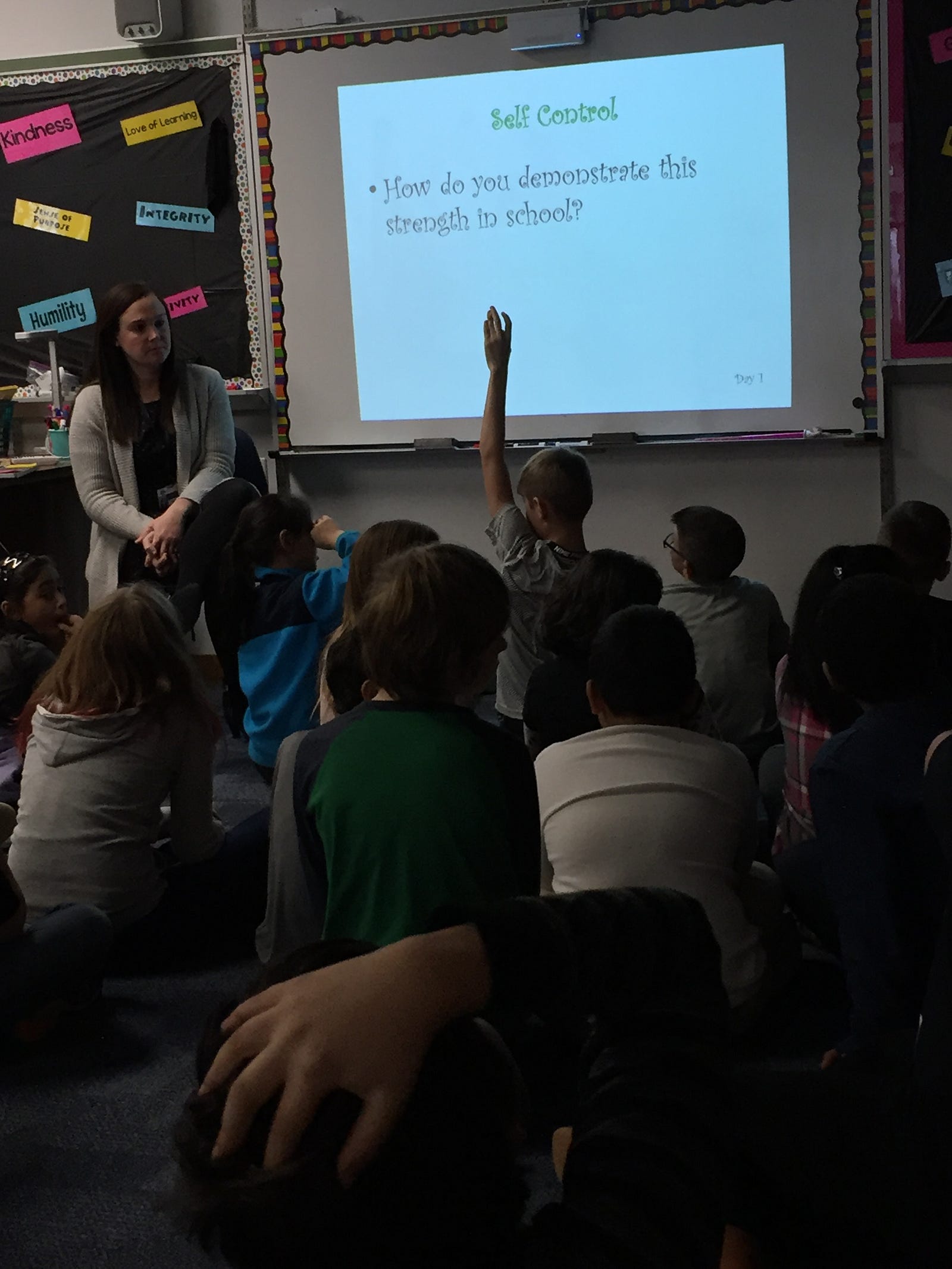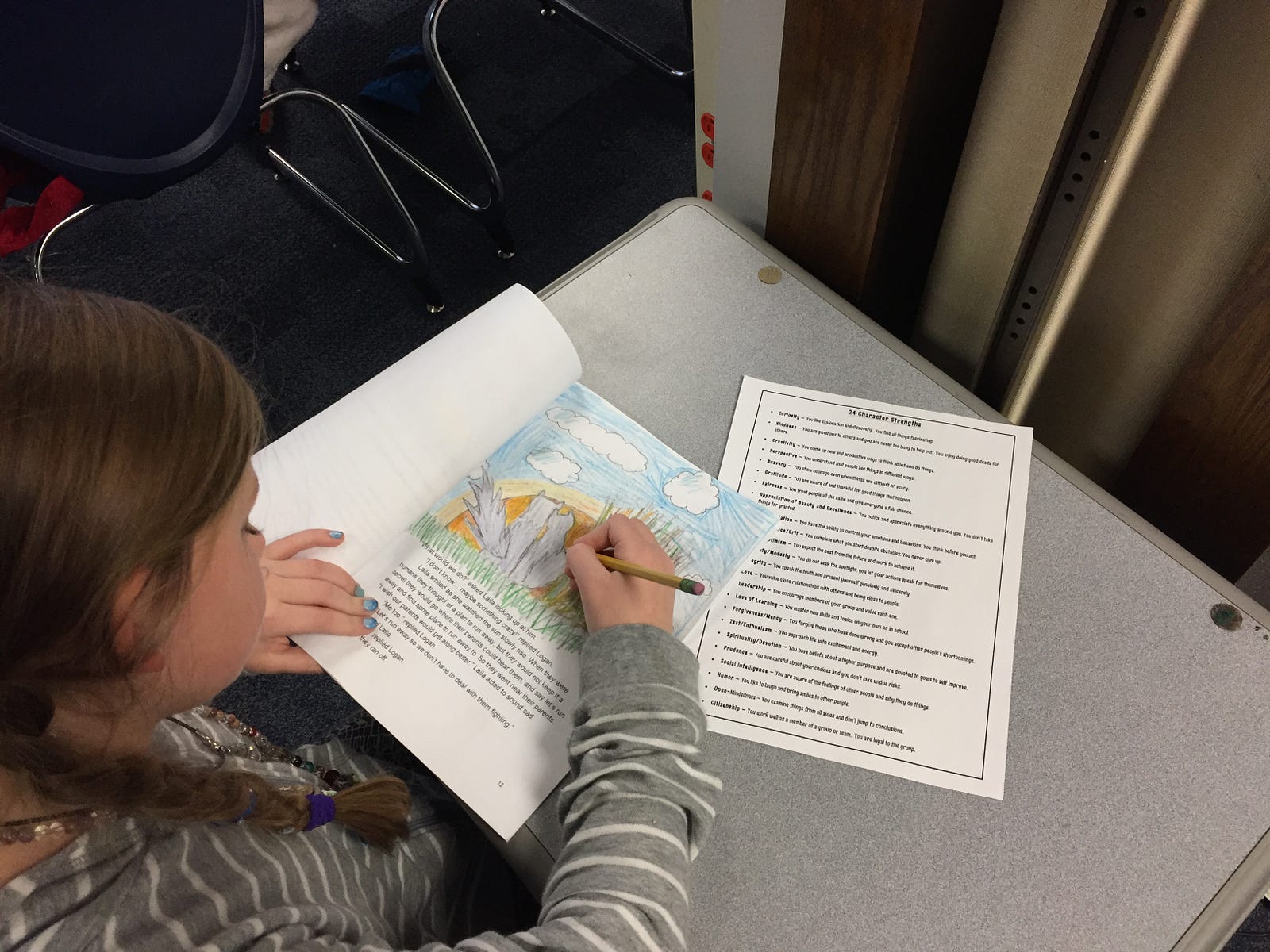It’s a Win-Win Situation
By Sarah AngottiIf you asked teachers, “What is your ultimate goal as an educator of today’s youth?”, most would say that they want their students to be happy productive citizens who work well with others. If you asked parents the same question, they would most likely have a similar answer. But, with the demands placed on educators and students in today’s society, it’s increasingly difficult to make the time to educate the whole child. Add in the influence of technology and social media, and it becomes even harder for children to develop social intelligence and to creatively think “outside of the box.”
There is a missing link in American schools that we must address. Children need to be able to understand themselves, to find their place in society, and develop the ability to understand and work with others. Character strengths need to be directly taught to our children — just as any other skill.
Here at Morgan Road Elementary School in Liverpool, New York, we have been teaching students positive psychology’s twenty-four strengths. Each week, children in our rooms spend 10–15 minutes a day focusing in on a specific character strength. We define the strength and then dive into deep discussions of what this looks like through literature, quotes, and local role models. As the week progresses, discussions move toward how people with this character strength help others and how the strength can help make a difference in the community.

These daily 10–15 minute discussions help students to develop an understanding of each strength. However, for students to gain a deep understanding and to internalize them, the strengths must become a part of their daily living and thinking. Therefore, the teachers intentionally include the vocabulary of the character strengths in every subject area throughout the day with their discussions and questions.Students over time, develop an understanding of their own strengths and the strengths of their classmates. As the children internalize and understand their strengths and those of their peers, it becomes a very powerful thing to experience.
Let’s look at just a few stories of students from our second and fourth grade classrooms over the past month — and how positive psychology has changed the way they interact with their peers in the classroom and at home.
John is a boy who deals daily with the struggle of completing his work. His ADHD makes it extremely difficult to complete an assignment and he needs a great deal of teacher support to successfully make it through a writing piece. The class was given an assignment to write a letter of gratitude to one person who has made a difference in their life. By the end of the writing period, many students were done and asking to print their letters. John continued to work quietly at his computer. He ended up writing three more gratitude letters by the end of the week. This was a huge success for a boy who struggles to get one or two sentences written in a class period.
Meg is a 2nd grade student who suffers from an autoimmune disorder. Meg never felt comfortable talking about the disease with her peers and would become frustrated when she would have to miss school because of a fever. After learning about several character strengths, Meg had the courage to stand in front of her peers and tell them about her disease. She communicated, in an extremely sophisticated way for a 2nd grader, that although the doctors didn’t have a cure yet, she needed to stay hopeful and optimistic that they would find one so she could stop missing school.
Alice is a nine-year-old student in fourth grade. During a parent conference, Alice’s mother told the story of a sleepover with several of Alice’s friends at her house. Alice’s little brother was excited to have the company of other children for an overnight stay. However, Alice was not thrilled to have her younger brother around while she was hanging out with her friends — and she made that clear to him. The next day, Alice’s mother took her aside and told her that her brother was very upset that she did not include him with the sleepover festivities. She told Alice that he had been crying and felt left out. Alice told her mother that she had not looked at it from his perspective and was very sorry. The next sleepover, Alice made sure to think of her brother’s feelings and included him without any prompting from her parents. Alice’s mom shared that Alice’s ability to see her brother’s perspective was because of learning about the “perspective of others” in the classroom.
Brian is a social seven-year-old that has a strong presence in the classroom. In the beginning of the year, Brian was constantly being redirected for talking or socializing. After we had reviewed the strengths for the first few weeks of school, Brian approached us with a plan. He explained to us that he used his social intelligence and realized that he can’t sit and do work in his group. He wanted to know: If he felt himself losing self-control, could he quietly move to another spot to work? The character strengths gave him the necessary vocabulary and understanding of himself to become more aware of his surroundings and know how to regain his self-control.
Billy is a bright, well-spoken boy in the fourth grade. During a lesson about one of the character strengths at the beginning of the year, Billy stated aloud that he thought learning about character was “a waste of time.” He was a boy who tended to be impulsive and have some behavior issues in the classroom. Now, Billy is one of the most enthusiastic advocates for learning about the character strengths and how they empower people. He is considerate and thinks before he makes choices. Two months into the school year, we received an email from Billy’s mother. This was her email:
Billy was practicing his French horn last night and he made a mistake. He then said to me that mistakes are a window of opportunity and that he learned that in class. Then he tried to play the song again. A month ago he would’ve been angry and frustrated and telling me how awful he was at the French horn. I hope that you all understand the impacts you are really making on these kids!
Across the country, students engage in what is known as a share time. This time has both pros and cons. It does build students’ oral speaking skills but it often is deemed unnecessary because students end up sharing toys or objects that they don’t have a lot to say about. Once we began teaching the character strengths, our share time took a 180 degree turn. They began sharing their strengths with the class instead of sharing their toys. For example, Michelle created her own measurement homework after a math lesson, because of her love of learning. Emma couldn’t wait to share about her reaction to a thunderstorm the night before, because she now knew she had the strength of bravery. Adam couldn’t wait to share a quote about how kindness makes you more beautiful no matter how you look on the outside. Because of their knowledge and internalization of the character strengths, share time became so meaningful and gave our students an authentic experience in sharing their strengths with others.
These are just of a few of the stories that we hear and see on a daily basis. Students are learning and eager to share their strengths with others in a positive way. We have changed the way we talk to children. We directly teach them about the value of themselves and how they affect the lives of those around them. This has made a huge impact for the students that we teach — and also for us as teachers.

Taking the time to teach children to understand themselves and to appreciate others is the most valuable thing a teacher can do. We intentionally incorporate character strengths throughout the day, everyday, and our students display more empathy, are more giving, and understand the mindset that “Other People Matter.” We see the impact of what we bring to them and we gain more fulfillment from our work. It’s a win-win situation!


